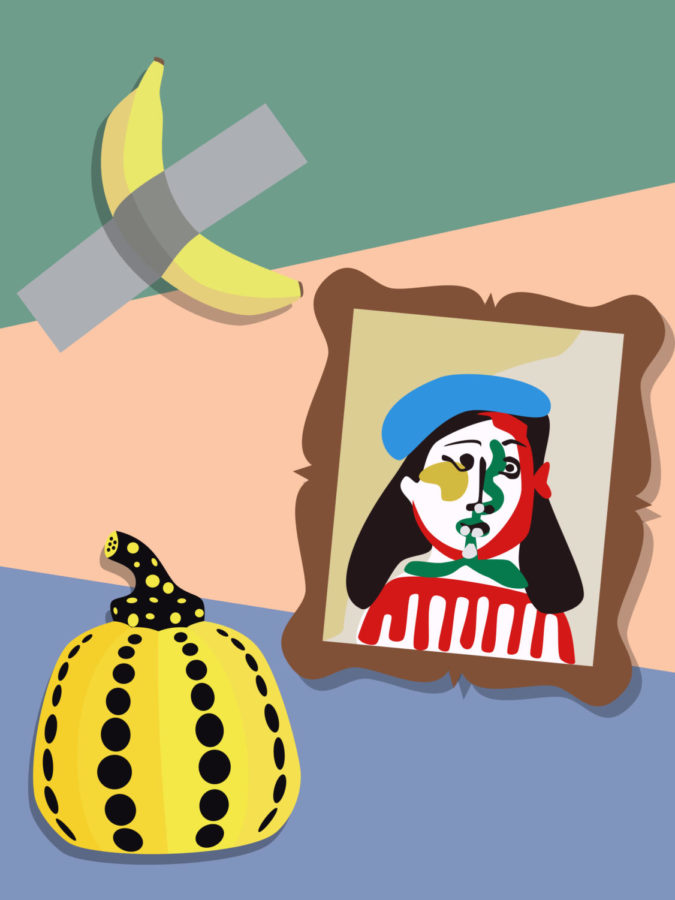Art Basel returns and reaffirms arts’ significance
March 31, 2023
Awoken from its pandemic-induced coma, the “Olympics of the art world” has made its grand return. Art Basel, the premier international art fair focusing on modern and contemporary works, just wrapped up in Hong Kong with 86,000 people in attendance.
For those who feel like they just don’t understand modern art, Art Basel may seem like a circus. After all, it was the birthplace of Maurizio Cattelan’s “Comedian” which drew a flurry of scorn from those outside the art world. Many did not understand why three bruised bananas duct-taped to a wall is considered art, and were infuriated that the piece sold for $120,000. Others question why performance artist David Datuna eating one of the bananas after their sale is also considered art.
In general, contemporary works of this nature almost always confuse the general public. Even worse, this confusion can turn into degradation. The “I could have made that myself” claim is a common manifestation of that hostility.
Yet while anyone can claim they could have made a particular work, they didn’t actually create it. Even if a work of art appears to be easily replicable, that doesn’t mean it’s easy to come up with. Making art history requires innovation. Pushing the boundaries of what is considered art has always drawn criticism. Art Basel is not to be scoffed at even if bruised bananas duct-taped to the wall are sold for $120,000. This year marked the grand reopening of an event that truly celebrates contemporary artists.
Works from 32 countries and 177 galleries were on display for those who were lucky enough to secure tickets before they sold out. Some notable seven-figure sales include one of Yayoi Kusama’s “Pumpkin” sculptures that sold for $3.5 million, Pablo Picasso’s “Fillete au Béret” that had an asking price of $5.5 million and an Alice Neel painting that sold for between $1-1.2 million. A price is not always reflective of quality, but the steepness of these prices are at least a hint that there is something special about these artists and their works that break artistic boundaries and hold meanings deeper than the untrained eye might see upon a quick look.
Attendees often remarked on the vibrant energy that ran throughout the event, as many were excited that it was finally back in full swing. When the pandemic hit in 2020, the fair was entirely digital. For the following two years, it was staged using satellite booths with representatives for dealers who could not attend in person. However, the event was limited to one floor instead of two, and not all sectors of the event took place. This year marks Art Basel’s return to life with two full floors, no more satellite booths and the event’s largest attendance since 2019. Next year the event will take place in Miami, so be sure to snag a ticket before the sell-out.





















